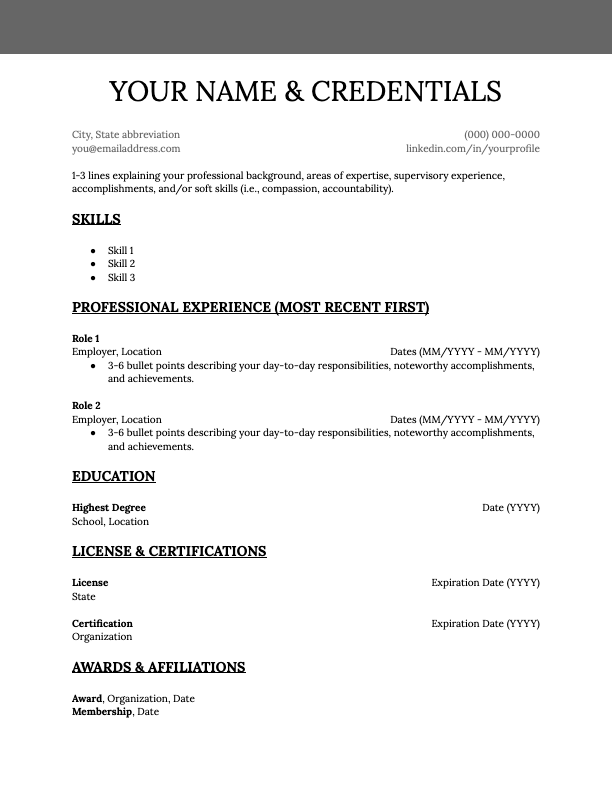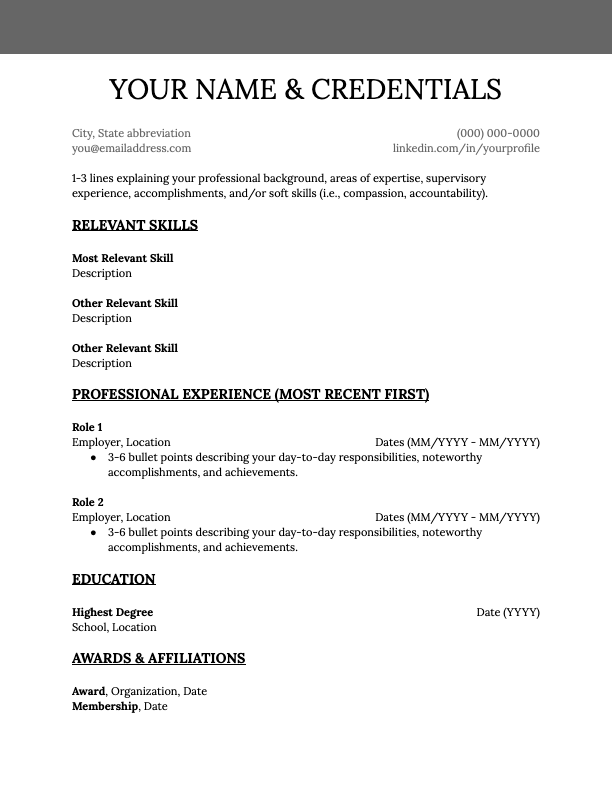How to Create a Nursing Resume
What steps can you take to make your nursing resume stand out? Discover how to craft a unique resume and find more advice on writing resumes for nurses. Even in a high-demand field like nursing, having an outstanding nursing resume is crucial to stand out among other applicants. A strong resume effectively presents your skills and experience in alignment with an employer’s requirements.
Learn how to create a memorable impression with these helpful nursing resume writing tips.

Struggling to meet your deadline?
Get your assignment on How to Create a Nursing Resume done by certified MDs and PhDs in the USA. ORDER NOW!
Networking with Other Nursings Professionally
6 Nursing Resume Writing Tips to Shine
These valuable suggestions for writing an impactful nursing resume can help you shine in a competitive applicant pool. Recruiters typically spend just about seven seconds reviewing each resume, so it’s essential to make those seconds count for you.
1. Customize Your Resume
Crafting an effective nursing resume involves tailoring it to the specific requirements of the employer. Different hospitals have their unique cultures and priorities. Check the organization’s website and social media presence to understand their values and emphasize how your skills can contribute to achieving their objectives.
2. Be Detailed
Adding specific details can enhance your resume. For instance, while both roles demand stamina, a nursing home nurse’s responsibilities differ from those of an urgent care nurse. By personalizing your professional experience, your resume stands out.
What illnesses do you treat? How do you handle various medications? What therapies and equipment are you skilled in?
Use action verbs (e.g., supervised, administered, collaborated) and positive adjectives (e.g., resilient, compassionate, observant) to describe your duties. Highlight how you improved patient outcomes or organizational efficiency.
3. Name Your Resume Professionally
Prioritize clarity when naming your nursing resume. Instead of vague titles, give your resume a name that stands out and is easy for employers to identify and retrieve, like “Firstlast_specialty_resume.doc.” Also, ensure that the document’s metadata is appropriately edited.
4. Opt for Readability
While unique fonts and colors might make your nursing resume visually appealing, they can sometimes distract from the content. Excessive formatting can suggest you’re compensating for a lack of qualifications.
Focus on accessibility through clear organization and consistent formatting. Put the most critical information front and center.
5. Include a Cover Letter
It’s understood that you can’t fit all your credentials into a single resume without overwhelming the reader. A cover letter offers a chance to delve deeper into your skills and accomplishments. It’s also a platform to showcase your cultural fit with the organization.
6. Keep It Concise
Nurses, especially those with less than a decade of relevant experience, usually don’t need more than a page for a job application. Avoid verbosity and make the most of the resume’s structure, such as margin adjustments and concise descriptions.
These tips ensure your nursing resume is easy to read, particularly for busy recruiters. As you follow these suggestions, watch out for common resume errors.
Common Nursing Resume Mistakes to Avoid
Attention to detail is essential in nursing, and mistakes on a resume can create a negative first impression. Here are some common errors to avoid:
- Typos: Simple errors can hinder your chances. Employers view typos as a lack of professionalism. Review your writing for mistakes and inconsistencies. Don’t rely solely on online spell-checkers, as they may not catch misused words.
- Personal Information: Include your full name, phone number, and professional email. You don’t need to share your home address. Presenting your nursing licensure type and number upfront helps distinguish you from unqualified candidates.
- Salary Information: Unless asked, avoid sharing your salary history. Focus on your qualifications rather than your pay expectations.
- Nicknames: Using shortened or middle names is fine as long as it’s consistent and aligns with official documents.
- Unprofessional Email: While a Gmail address with “firstname.lastname” is okay, some employers might find it unprofessional. Consider getting a custom domain.
- First Person Pronouns: Avoid using “I” repeatedly; it’s understood you’re speaking from your perspective.
- Voicemail: Keep your voicemail brief (under 25 seconds) and courteous.
- Social Media Check: Employers might look at your online presence, so avoid content that could raise concerns about your judgment.
Examples of Nursing Resumes
Nursing resumes are often chronological, functional, or a mix of both. Choose the format that best highlights your skills and suits the job’s requirements. For your first job, a functional or combination resume that emphasizes your skills could be effective. A chronological or combination resume is better for roles requiring experience.
The Importance of ABHES and CAAHEP Accreditation in Nursing
Reverse Chronological Resume
A reverse chronological resume usually starts with your most recent job. If that job isn’t relevant, a functional resume might work better. The reverse chronological format highlights the applicant’s relevant experience, while the ER nursing resume example focuses on terms that automated review systems recognize.
Reverse Chronological Resume Example

Hybrid Resume
This hybrid nursing resume for a recent nurse graduate begins by showcasing your skills and qualifications. This approach highlights your training and capabilities upfront, indicating that you possess nursing experience while prioritizing your skill sets for the employer’s immediate attention.
Combination Resume Example

Functional Resume
This guide on creating a CNA resume offers examples of skill types suitable for a skills-based resume format. This is particularly helpful when your recent job isn’t closely related to the one you’re applying for. Similarly, if you’ve held several short-term positions (like being a travel nurse), detailing each individual role could be space-consuming. In such cases, focusing on a comprehensive list of your skills would better showcase your value.
The Nurse’s Guide to LinkedIn and Networking
Functional Resume Example


Dont wait until the last minute.
Provide your requirements and let our native nursing writers deliver your assignments ASAP.

